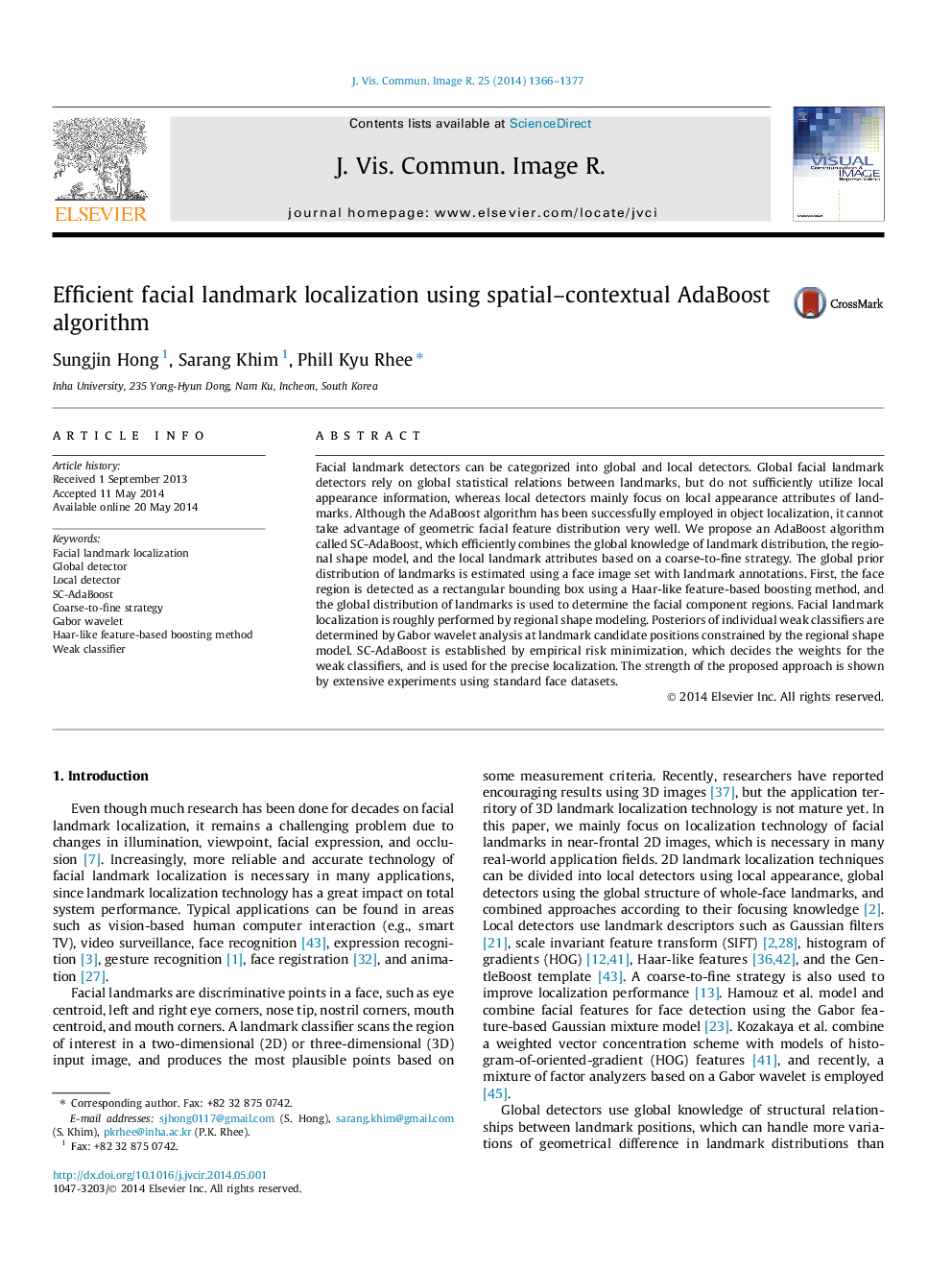| Article ID | Journal | Published Year | Pages | File Type |
|---|---|---|---|---|
| 528613 | Journal of Visual Communication and Image Representation | 2014 | 12 Pages |
•SC-AdaBoost uses a coarse-to-fine strategy to improve localization performance.•Combine global distribution, regional shape model and local landmark attributes.•Consider spatial–contextual relations among adjacent landmarks for localization accuracy.•Posterior probabilities of individual landmarks are calculated at each point.•Minimize empirical risk and decide the weights for the weak classifiers.
Facial landmark detectors can be categorized into global and local detectors. Global facial landmark detectors rely on global statistical relations between landmarks, but do not sufficiently utilize local appearance information, whereas local detectors mainly focus on local appearance attributes of landmarks. Although the AdaBoost algorithm has been successfully employed in object localization, it cannot take advantage of geometric facial feature distribution very well. We propose an AdaBoost algorithm called SC-AdaBoost, which efficiently combines the global knowledge of landmark distribution, the regional shape model, and the local landmark attributes based on a coarse-to-fine strategy. The global prior distribution of landmarks is estimated using a face image set with landmark annotations. First, the face region is detected as a rectangular bounding box using a Haar-like feature-based boosting method, and the global distribution of landmarks is used to determine the facial component regions. Facial landmark localization is roughly performed by regional shape modeling. Posteriors of individual weak classifiers are determined by Gabor wavelet analysis at landmark candidate positions constrained by the regional shape model. SC-AdaBoost is established by empirical risk minimization, which decides the weights for the weak classifiers, and is used for the precise localization. The strength of the proposed approach is shown by extensive experiments using standard face datasets.
